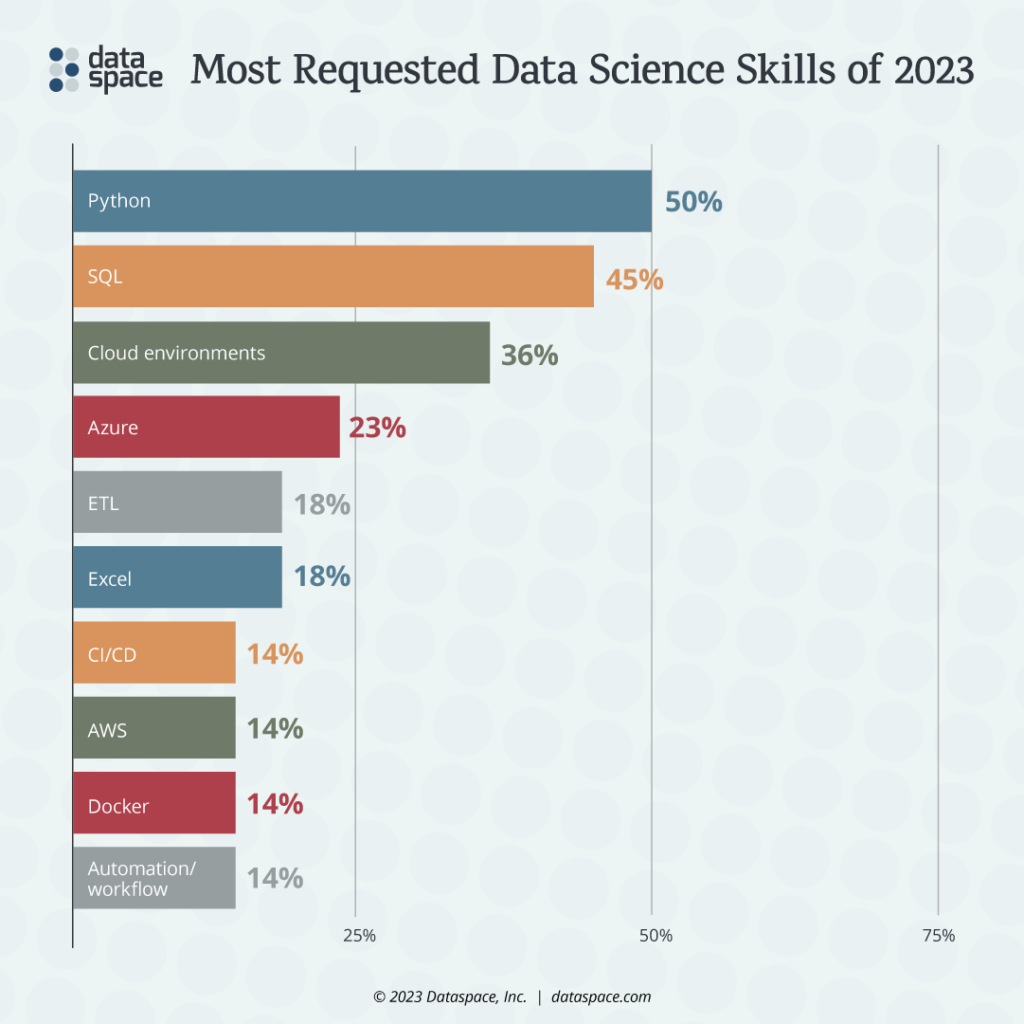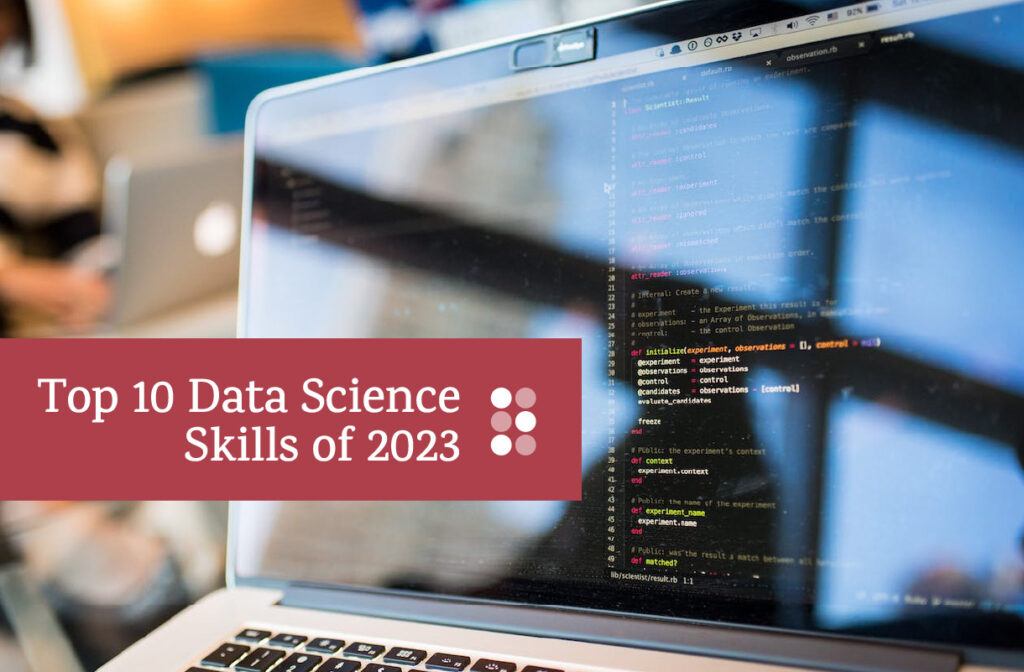As 2023 draws to a close, we are left to reflect on this past year: the roles we worked on, the candidates we spoke with, and the companies that we recruited for. We also like to tally up the most requested data science skills from our searches this year and share our findings with the community. It’s interesting to compare our list below with KD Nugget’s recommended skills for data scientists in 2023. There’s a fair bit of overlap, but especially significant that 3 of our top 10 are for cloud-based environments.

1. Python
With its wealth of libraries and expansive applicability, Python ranks as the most in-demand skill of 2023. Python is unparalleled in its versatility and can be used for a variety of data applications—from automation to machine learning to building systems The relative ease with which Python syntax can be read is a major factor in why it’s so popular these days.
2. SQL
Coming in at number two, Structured Query Language, or SQL, is the second most in-demand skill on our list. The popularity of SQL speaks to its prevalence in the data world, and it’s used to query data by anyone from BI analysts, to data scientists, to data engineers. SQL is the most commonly used relational database resource out there.
3. Cloud Environments
Our third most requested skill is experience with cloud environments in general! As more and more companies continue to migrate their data warehouses from on-prem to cloud storage, it’s pretty clear that cloud environments are here to stay.
4. Azure
Will 2024 be the year for Microsoft Azure? Perhaps! While AWS is still in control of the most cloud computing total, Azure seems to be growing in popularity, especially with retail companies that want to use an alternative to Amazon. We certainly saw more of our clients using Azure this year than in the past!
5. ETL Pipeline Building and Maintenance
ETL pipelines move data from multiple sources into one central repository, and they’re the bread and butter for many data engineers and data analysts. It’s no surprise that ETL experience ranks as number 5 on our list—it’s a vital skill to have if you work with data that’s coming in from more than one source.
6. Excel
This year, Excel was in high demand—even more so than other Data Visualization tools like PowerBI and Tableau. This might speak to the fact that Excel is more widely used/widely applicable across industries and meets a variety of company needs. Excel is truly a workhorse, and having a solid foundation in Excel will only help you to get into more verbose analytical endeavors.
7. CI/CD
CI/CD stands for Continuous Integration and Continuous Delivery. Whether you’re a data engineer, cloud engineer, platform engineer, or software engineer, CI/CD will almost certainly be a part of your job. Over the years, we’ve seen a steady increase in the number of roles that demand experience with CI/CD.
8. AWS
Does Amazon Web Services make up the majority of the internet? Last we checked, AWS holds over 40% of the cloud computing space, running the backend for huge companies like Netflix and Pinterest (in addition to many others).
9. Docker
The presence of Docker on this list might point more to the fact that we’ve worked on more DevOps and Platform Engineer roles than in previous years. Docker is perhaps the most commonly used containerization tool, and is essential to know if you’re interested in the field of DevOps.
10. Experience with Automation and Workflow Management Tools
Over the last few years, we’ve noticed an increase in demand for experience with tools like Airflow and Jenkins. Companies are putting more effort into automating as many processes as they can, and while these might be more auxiliary than other data tools, having experience with automation tools is becoming more prevalent by the year.
What data science skills will be in-demand in 2024?
There you have it! These were the 10 most in-demand data science skills from the roles we worked on in 2023. Were there any skills on here that surprised you? Or maybe the lack thereof? With all the talk of AI and chatGPT in 2023, you may wonder where those skills fall. We predict with the continuing rise of AI and large language models that we may start to see those skills break into our top ten for 2024.

